The specific role and function of a local government can vary from authority to authority, though their fundamental mission remains the same: maintain key public services and infrastructure in a way that delivers value for money for the taxpayer. Achieving this mission, however, is no easy feat. With rising populations and shrinking budgets, the pressure on local governments to find cost-efficient, impactful solutions is significant.
RAIN is a passive, battery-free, wireless technology that helps identify, locate, authenticate, and engage with items, and is already trusted to connect hundreds of billions of devices.
For local governments this can offer the following key benefits:
- Flexibility – RAIN can be adapted to meet almost any use case, each of which can be connected together as needed.
- Ubiquity – With RAIN tags already attached to many devices, the usual timelines and costs associated with deployment can be significantly lower.
- Transparency – The increasing expectations of government transparency can be met with trusted data and transparent asset management.
In this way, RAIN can create bespoke inter- and intra-governmental implementations that meet the specific challenges that matter most to the local community, regardless of the functions or size of a local government. Four example use cases include:
Sustainable waste management
Local governments face increasing expectations from their citizens to champion sustainable solutions. Central to this is waste management. The EU’s incoming Digital Product Passport (DPP) requirements and the United Nations Transparency Protocol are both set to bring in sweeping changes to enhance the circular economy and will have a direct impact on local government. RAIN can offer support in complying with these rules and driving more sustainable societies.
RAIN technology ensures that each tagged product has verifiable data detailing its constituent materials, supporting local governments with large-scale recycling efforts by optimizing end-of-life sorting. This long-term approach is already transforming industries such as food waste, textiles, and tyres, helping reduce the overall consumption of raw materials through real-time data.
Reducing congestion
There are more vehicles on our roads than ever before. Commuters and delivery drivers lose hours of their lives every day to sitting in stationary traffic, which also causes more severe consequences like delaying emergency services. For instance, New York City has seen record-slow response times for its emergency services, with these extra minutes sometimes making the difference between life and death.
Putting systems in place to allow traffic to move freely is therefore more important than ever. RAIN reader traffic cameras can detect vehicles using a tag attached to the vehicle, usually on the windshield or registration plate. This allows local governments to levy congestion charges and tolls without the need for barrier gates that slow traffic throughput. But unlike Automatic Number Plate Recognition (ANPR) systems that offer similar benefits but depend on optical technologies to read a vehicle’s number plate, RAIN is not impacted by harsh environmental conditions like snow or fog. Nor can RAIN tags be blocked by varnishes, sprays, or other physical covers that cloak the plate from the view of a camera. RAIN tags ensure the connection between tag and reader is entirely secured, with authentication protocols in place to prevent both unauthorized access and tampering of the tag itself.
This encourages people to leave their cars at home in favor of public transport, freeing up roads for emergency services and buses. This same RAIN data can also be used to optimize routes, timetabling and fleet management for more efficient, real-time data-led travel planning. Furthermore, the revenue from tolls can be reinvested into public transport, creating a virtuous cycle of less traffic, cleaner air, and better transport for all stakeholders.
Healthcare and welfare
Alongside the enhanced emergency service response times that RAIN can deliver, local governments can also use it to support other public health initiatives. Embedded, infallible RAIN tags help local governments track the location and monitor the status of pharmaceuticals and vaccines. This supports public health as vaccines can be properly dispensed, and local governments have stringent safeguards against the diversion of supply.
Local governments can also support public health by ensuring that social housing is in adequate condition for those who need it. RAIN technology combined with sensors can track the condition of a property, providing real-time updates on levels of dampness, water leaks, and heating system malfunctions to ensure the building remains in good condition. This type of digital transformation with RAIN enhances tenant welfare, promotes sustainability, and helps to drive positive social impact.
Using technology to build community
Many local governments have struggled to keep up with the accelerated pace of technological advancements in the digital age. Using RAIN as a foundational technology for multiple interoperable services can help authorities deliver the digital transformation their residents expect, without the high costs of investing in numerous proprietary technologies.
Almost every facet of local governments’ work can be streamlined using RAIN. From health and welfare to parks and recreation, RAIN is a resource-efficient solution that provides unparalleled transparency, ushering in a new era of smart cities and towns.
Hundreds of billions of RAIN tags have been deployed, with 45 billion chips shipped in 2023 alone. Tapping into this existing ecosystem can be quick and easy. Find out more on our website.
